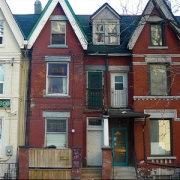If you’ve been following the housing market (in most cities) over the last year, this chart likely won’t surprise you. It is from a recent City Observatory article by Joe Cortright talking about the “k-shaped housing market” that we have seen emerge over the last year. The above is for the US, but I would imagine that the chart would look similar for Canada, as well as for other countries. Here’s an excerpt from the article:
There’s an obvious explanation for the different trajectories of house prices and rents: Low income workers rent; high income workers own and buy homes. High income households have been barely grazed by the Covid-19 recession. In fact, the combination of low interest rates and enforced savings (because many kinds of consumption spending, including dining, entertainment, travel and even much retail have been constrained by lockdowns), mean higher income households may find housing a much more attractive spending item. If you can’t go out to dinner, or take a vacation, you have more money to spend on a new home. Low wage workers are in the opposite situation. Low wage workers have borne the brunt of the recession; they are also much more likely to be renters than higher income households.
It is perhaps worth reiterating that our fixation on homeownership is not universal. If you live in Switzerland — a very wealthy country — you’re more likely to rent than own. And if you live in Germany, you’re more likely to live in an apartment than in a low-rise house. Still, that doesn’t change the fact that the impacts of COVID-19, and our lockdowns, have been felt unequally. This chart is an example of that.









 Maziar Moini, Broker of Record - Home Leader Realty Inc.
300 Richmond St. W., #300, Toronto, ON M5V-1X2
Maziar Moini, Broker of Record - Home Leader Realty Inc.
300 Richmond St. W., #300, Toronto, ON M5V-1X2


